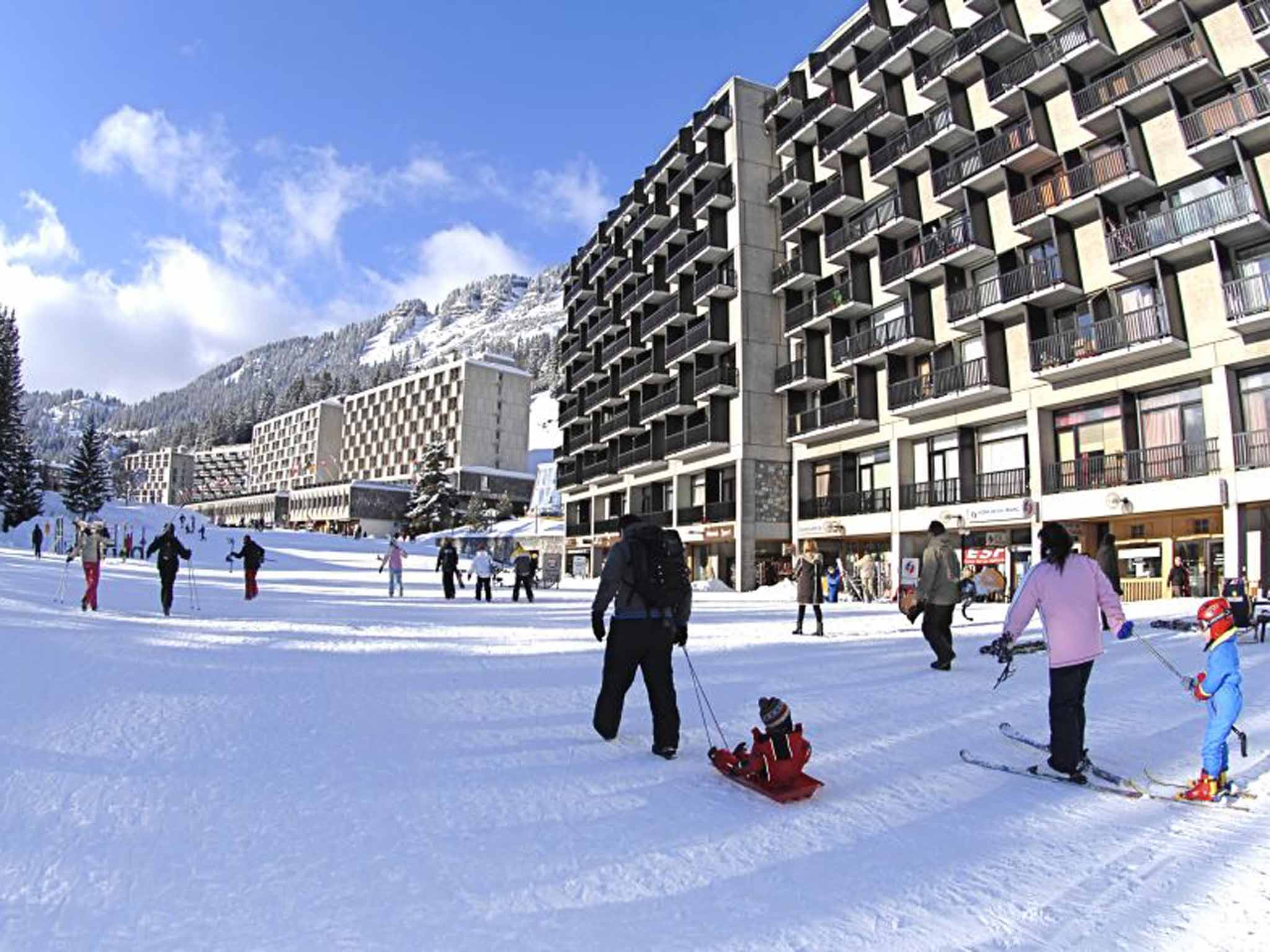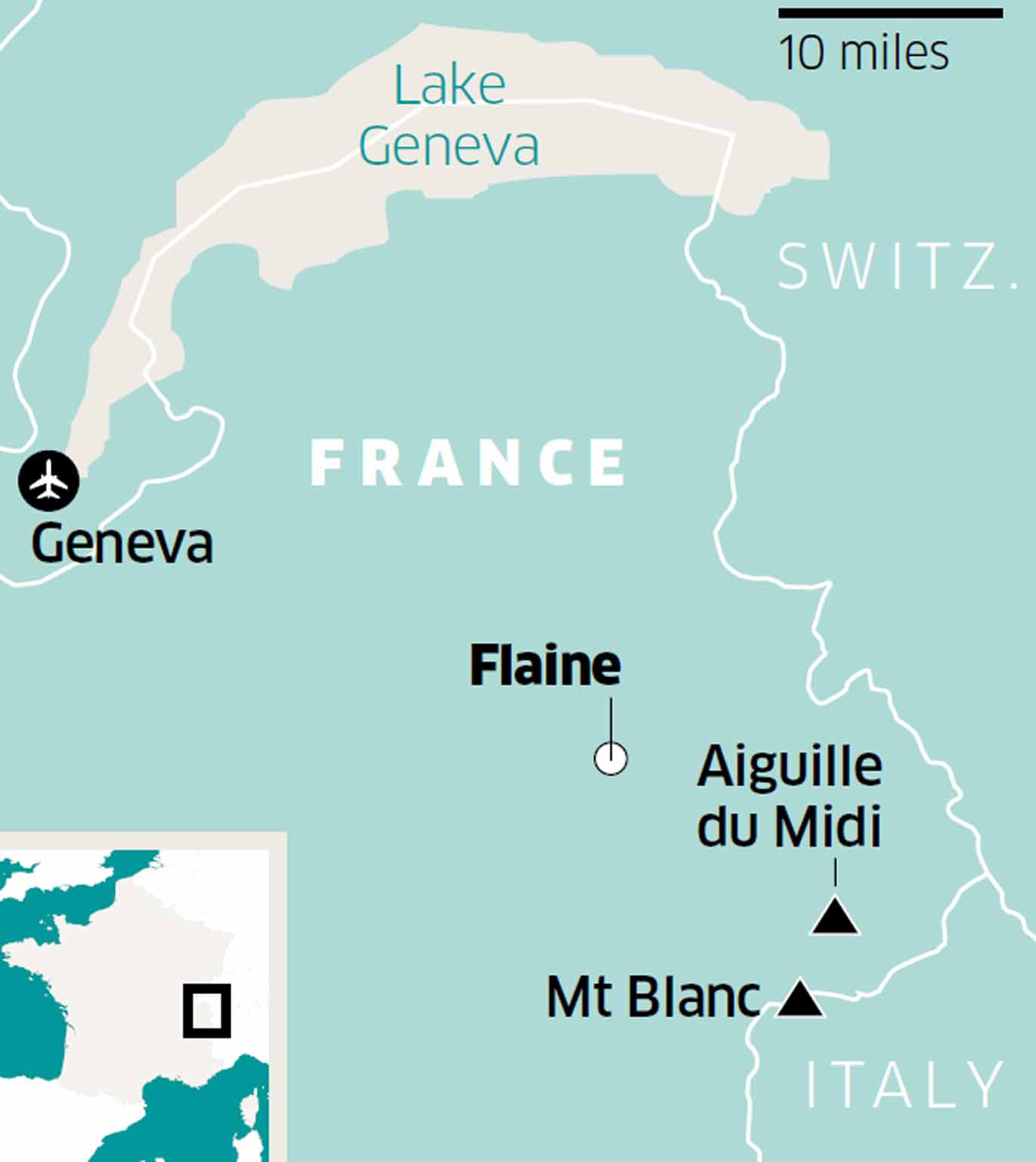The Independent's journalism is supported by our readers. When you purchase through links on our site, we may earn commission.
Skiing at Flaine: The revitalisation of a French ski resort
After Bauhaus, brutalism and bankers, Flaine is ready for a comeback

You would expect a ski destination to have its ups and downs. What good would it be without them? But the French resort of Flaine, purpose-built for skiing in the late 1960s, is a place of particularly dramatic peaks and troughs, figuratively speaking.
Established in an Alpine bowl by an idealistic husband-and-wife team, it was designed by the celebrated Bauhaus architect Marcel Breuer; which means that along with the usual facilities of a ski resort it had an art gallery, a library with books in French, English and German, and giant sculptures by Picasso, Jean Dubuffet and Victor Vasarely gracing its centre.
Work on Breuer’s masterplan continued from the opening in 1969 until the late 1980s, by which time his brutalist concrete architecture had become about as fashionable as bell-bottom jeans. Flaine came to be ritually associated with sink-estate flats, and the annual Where to Ski and Snowboard guide took to referring to it as “Phlegm”. Then it fell into the hands of a bank, just about the worst fate that can befall a ski resort. The buildings were sold off, one by one; and the centre of the resort, Flaine Forum, became an empty, depressing place.
The excellent skiing continued to be a draw, and new lodgings were built on Flaine’s periphery in the 1990s. Then, in the early 21st century, the then-powerful Canadian developer Intrawest built a satellite village. Other such projects followed; and finally, in 2011, a new résidence (the French term for an apartment building with common services and facilities) opened in Flaine Forum. After 10 years of chronic problems, the resort’s heart responded to treatment.
The arrival this season of a new hotel on a prominent, central site promises further revitalisation. And a startling project to build a cable car running all the way up from the autoroute and railway line in the Vallée de l’Arve – a distance of about seven kilometres – gives the resort the potential to attract a new influx of skiers. The cable car is scheduled for completion in 2021.

The quality of Flaine’s skiing has never been in question; nor has the beauty of its setting. When Eric Boissonnas, the resort’s co-founder, first hiked up to the bowl he was “amazed”, he wrote, by “forests of spruce everywhere up to 1,900 metres; above, slow-growing trees that survive the worst weather; a stream cascading to the bottom of the valley”. When Breuer arrived on the site by helicopter, he found it to be “a wonderful place”, and determined “not to spoil it” (though whether he achieved that remains something of a moot point).
Today, a cable car runs up to the lip of the bowl, from which pistes (red and blue, plus one black) run back down to the resort. To either side there is a variety of longer runs, one of them a green. Beyond the bowl lies the rest of the skiing in the Grand Massif area – the fifth biggest in France – which offers descents up to 14km in length to the villages in the valley below: Sixt, Samoëns, Morillon and Les Carroz.
On my recent visit, unfortunately, high winds closed the cable car, though skiing conditions in the bowl were excellent. But if you don’t get to the 2,400m lip of the bowl, at Les Grandes Platières, you miss what is one of the finest views in the Alps. There, a whole team of peaks, from the 3,842m Aiguille de Midi to the 4,810m Mont Blanc, lines up for a sensational group photo.
With about 11,000 guest beds, Flaine remains one of the smaller resorts to be created during France’s ski boom of the Sixties and Seventies: nearby Avoriaz is no giant either, but it has 5,000 more beds. And, in recent years, Flaine has had no hotel rooms: it opened with a handful of properties, but all of them have closed. This season, however, the Terminal Neige Totem hotel has been opened by the Sibuet group – which last season took over the single hotel in Avoriaz, Hotel des Dromonts.
The Sibuet group is a family business, founded in 1989 by Jocelyne and Jean-Louis Sibuet, in Megève, with a property called Les Fermes de Marie. Its early restaurants and hotels had a consistently romantic, Savoyard style, which has evolved as its properties have spread to Paris, Lyon and Provence. But a step-change came with the move into the high Alps, where the company opened the five-star Altapura in Val Thorens in 2011. Its cool, playful interior, realised largely in plywood and grey wool, was designed by the Sibuets’ son, Nicolas, who at the age of 32 now runs the family business with his sister Marie, 28.
The new Totem in Flaine, named after the Picasso sculpture outside, is also in a listed building, erected for hotel use. The exterior remains very Bauhaus: strong and purposeful but beautifully detailed and very respectful of the site, which looks across the ski slopes to a densely wooded mountainside. The interior? More craziness.
The recent practice of some hospitality companies (notably the US chain Ace, and Meininger in Europe) of revitalising disused industrial buildings and offices as hotels in an intentionally ad hoc way had, I assumed, inspired Nicolas Sibuet’s approach for the Totem. When I asked him – he happened to be at the hotel – he smiled and said he had “looked at lots of books and magazines” as research. But what he has done is converted a disused hotel as ... a hotel. Stripped back, haphazardly furnished, roughly painted and decorated with neon and slogans, the Terminal Neige Totem sets a new style for young, three-star skiers. Why the long name? Because Terminal Neige will be a chain. Similar hotels are to open in Chamonix and Avoriaz in the next three years.
Getting there
The closest airport is Geneva, served by Swiss (0345 601 0956; swiss.com) from Heathrow and London City; BA (0844 493 0787; ba.com) from Heathrow; and easyJet (0843 104 5000; easyjet.com) from a dozen UK airports.
Staying there
Terminal Neige Totem (00 33 4 57 74 74 74; terminal-neige.com). Doubles from €172, B&B.
More information
Join our commenting forum
Join thought-provoking conversations, follow other Independent readers and see their replies
Comments
Bookmark popover
Removed from bookmarks